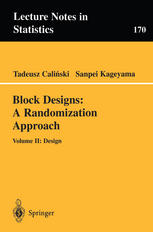

Most ebook files are in PDF format, so you can easily read them using various software such as Foxit Reader or directly on the Google Chrome browser.
Some ebook files are released by publishers in other formats such as .awz, .mobi, .epub, .fb2, etc. You may need to install specific software to read these formats on mobile/PC, such as Calibre.
Please read the tutorial at this link: https://ebookbell.com/faq
We offer FREE conversion to the popular formats you request; however, this may take some time. Therefore, right after payment, please email us, and we will try to provide the service as quickly as possible.
For some exceptional file formats or broken links (if any), please refrain from opening any disputes. Instead, email us first, and we will try to assist within a maximum of 6 hours.
EbookBell Team

4.1
30 reviewsThe book is composed of two volumes, each consisting of five chapters. In Vol ume I, following some statistical motivation based on a randomization model, a general theory of the analysis of experiments in block designs has been de veloped. In the present Volume II, the primary aim is to present methods of that satisfy the statistical requirements described in constructing block designs Volume I, particularly those considered in Chapters 3 and 4, and also to give some catalogues of plans of the designs. Thus, the constructional aspects are of predominant interest in Volume II, with a general consideration given in Chapter 6. The main design investigations are systematized by separating the material into two contents, depending on whether the designs provide unit efficiency fac tors for some contrasts of treatment parameters (Chapter 7) or not (Chapter 8). This distinction in classifying block designs may be essential from a prac tical point of view. In general, classification of block designs, whether proper or not, is based here on efficiency balance (EB) in the sense of the new termi nology proposed in Section 4. 4 (see, in particular, Definition 4. 4. 2). Most of the attention is given to connected proper designs because of their statistical advantages as described in Volume I, particularly in Chapter 3. When all con trasts are of equal importance, either the class of (v - 1; 0; O)-EB designs, i. e.